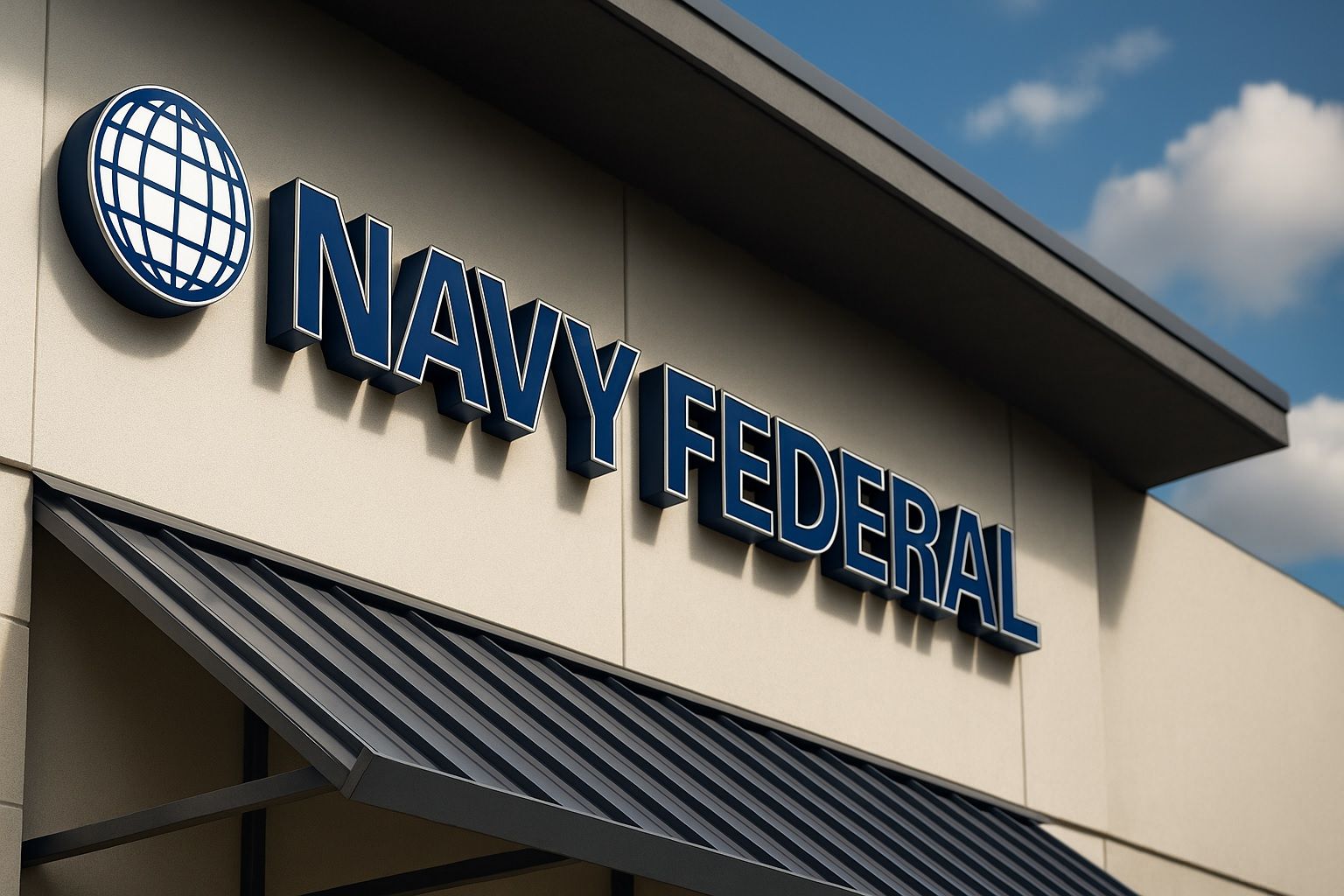- High Awareness, Low Understanding: A new survey shows 92% of military members know about VA home loans, yet nearly half don’t understand key benefits – 55% even think a down payment is required, which it isn’t [1]. Misconceptions about VA loans are widespread, leading many veterans to miss out on 0% down financing and typically lower interest rates (about 0.25% below conventional loans) [2].
- Myths Persist Despite Satisfaction: Eligible veterans hold 2+ misconceptions on average [3]. Common myths (e.g. “VA loans need a big down payment or perfect credit”) are false, yet they deter usage [4]. Ironically, 92% of those who used a VA loan were satisfied with the process and 91% would recommend it to fellow servicemembers [5], showing that informed borrowers reap the benefits.
- VA Loan Benefits Are Powerful:VA mortgages require 0% down payment and charge no private mortgage insurance (PMI), ever [6]. They feature flexible credit standards and a one-time funding fee (waived for many disabled vets) to keep costs low [7]. These perks let veterans buy homes sooner and cheaper than with FHA or conventional loans – truly “must-know” benefits that many are missing out on.
- New Law Protects Struggling Veteran Homeowners: In July 2025, Congress passed the VA Home Loan Program Reform Act of 2025 (H.R. 1815) establishing a “partial claim” relief option for delinquent VA borrowers [8]. This gives ~70,000 seriously delinquent veteran homeowners an interest-free lifeline to pause foreclosure by tacking missed payments onto a junior lien [9]. Advocates hail it as “a crucial safety net…preventing thousands of veterans from foreclosing on their homes” [10].
- Rates Near Multi-Year Lows: As of late October 2025, 30-year VA loan rates average ~6.05% [11] – down from ~7–8% earlier in 2025. A surprise Fed interest rate cut on Oct. 29 slashed borrowing costs and sent mortgage rates tumbling to ~6.1%, the lowest in over a year [12]. (For comparison, FHA 30-year loans hover ~5.76% and conventional ~6.2% [13].) Mortgage applications jumped 7.1% in late October as buyers rushed to capitalize on the rate drop [14].
- Optimistic Outlook: Most experts predict continued relief into 2026. Over half of analysts polled expect further rate declines in the coming weeks, and NAR economists forecast ~6.0% mortgage rates by 2026, which could boost home sales ~14% [15]. Industry leaders note even small rate dips are already “lifting home sales” and creating a more favorable market for buyers [16]. However, they caution that rates are still high vs. the 3% era, so veterans should seize today’s benefits while staying alert to future moves [17].
VA Loans: Widely Known, Poorly Understood
VA home loans – mortgages guaranteed by the U.S. Department of Veterans Affairs – are one of the most powerful benefits for servicemembers and veterans, yet a new report reveals that many who served don’t fully grasp these advantages [18]. The “Spotlight on VA Loans” survey (1,017 military participants) found nearly all respondents (92%) have heard of VA loans, but knowledge gaps persist [19]. For example, almost half were unaware VA loans typically offer lower interest rates, and a majority believed some form of down payment was necessary, which is incorrect [20]. In reality, VA loans allow qualified buyers to finance 100% of the home price with $0 down, and often at interest rates about 0.25% lower than conventional mortgages [21].
These misconceptions stem from information gaps. Only 39% of those surveyed rely on official VA or military resources for loan information; the rest lean on personal research or word-of-mouth [22]. This fosters persistent myths – from who is eligible to how the loans work. On average, eligible veterans held more than two false beliefs about VA loans [23]. “For Active Duty servicemembers, Veterans, and their families, VA loans can provide crucial benefits on the journey to homeownership,” says Christopher Davis, Navy Federal Credit Union’s Assistant VP of Residential Lending, “At Navy Federal, we believe every military family deserves the opportunity to own a home without unnecessary barriers or confusion.” [24] Davis’s credit union commissioned the study and is ramping up education efforts to dispel these myths.
Encouragingly, veterans who do take advantage of VA loans end up extremely happy with them. 92% of users reported satisfaction with their VA loan experience, and 91% said they’d recommend VA loans to fellow veterans [25]. This high satisfaction suggests that once misconceptions are cleared up and the process is understood, VA loans deliver on their promise. The challenge is simply bridging the knowledge gap so more military families can benefit.
VA Home Loan Benefits – No Down Payment, No PMI, and More
Why are VA loans so beneficial? They are unique in the mortgage world for offering multiple buyer-friendly features simultaneously. Unlike conventional mortgages (which typically require 3–20% down and charge private mortgage insurance for low-down-payment buyers) or FHA loans (which require ~3.5% down and come with lifelong monthly insurance premiums), VA loans require zero down payment and never charge PMI [26]. The VA’s guaranty of the loan (covering about 25% of the balance) means lenders can lend 100% of the home’s value with confidence. For the borrower, that means no need to save tens of thousands for a down payment and no extra insurance fee inflating the monthly payment – a huge affordability win for veteran buyers.
VA loans also tend to have more lenient credit and debt-to-income requirements than comparable conventional loans, making homeownership accessible to more families who serve. The VA does not set a minimum credit score; while lenders impose their own standards, they often approve VA borrowers with modest credit profiles, thanks to the VA backing. There is no maximum loan amount (though loans above local conforming limits may require a small down payment on the excess). And if a veteran encounters financial trouble, the VA can step in with foreclosure avoidance assistance – a safety net recently strengthened by new legislation (more on that below).
The primary cost unique to VA loans is a one-time VA funding fee. For most first-time VA buyers this fee is 2.15% of the loan (slightly higher for subsequent use) [27]. Disabled veterans, Purple Heart recipients, and certain surviving spouses pay no funding fee [28], exempting many who could least afford it. Importantly, the fee can be rolled into the loan amount, meaning no upfront cash needed. There’s also no ongoing mortgage insurance premium, so over the life of the loan VA borrowers often save thousands compared to FHA loans that add monthly insurance costs [29].
Who qualifies? VA loans are available to a broad range of military-connected individuals: Veterans and active-duty service members who meet length-of-service requirements (e.g. 90 days wartime or 181 days peacetime active duty) [30], National Guard and Reserve members (typically 6+ years of service, or 90 days active Title 32 duty), and certain surviving spouses of veterans [31]. This benefit is earned through service – and many more people qualify than realize it [32]. Some assume only combat veterans or those with specific ranks qualify, but in reality millions are eligible. In fact, the VA Home Loan program now backs roughly 3.7 million home loans nationwide [33], and usage is growing fast.
Misconceptions Holding Veterans Back
Despite these advantages, several myths continue to hold back would-be VA loan users:
- “VA loans require a down payment.” False. No down payment is required for VA financing in most cases – qualified borrowers can finance 100% of the purchase [34]. This myth persists perhaps because almost all other loan programs require some down payment.
- “You need excellent credit for a VA loan.” Not necessarily. VA loans are actually more forgiving on credit than conventional mortgages [35]. While lenders do have credit standards, many vets with moderate credit scores can and do get approved. The government backing encourages lenders to be flexible.
- “Only certain veterans are eligible.” In reality, eligibility is quite broad [36]. Veterans from all branches, active-duty personnel, Guard/Reserve members, and many surviving spouses can use the benefit if basic service requirements are met. It’s not limited to combat vets or career military – even a single enlistment can earn eligibility.
- “VA loans are too complicated or slow.” The process has improved greatly. VA loans now often close as fast as other loans, and the VA’s online systems for appraisals and eligibility have sped things up. Many lenders specialize in VA lending and streamline the experience for borrowers.
Navy Federal’s report highlighted these misconceptions to stress the need for better education. Chris Davis from Navy Federal noted that while realtors and lenders are generally knowledgeable, over 25% of military homebuyers feel it’s hard to find an agent who truly understands military families’ needs [37]. That suggests borrowers should seek out VA-savvy professionals. Davis also offered tips for military families: educate yourself on VA benefits, work with experienced VA lenders, and utilize available resources (like workshops, VA homebuyer classes, and online calculators) [38]. With the right guidance, veterans can bust the myths and make informed decisions, unlocking the full value of their earned homebuying benefits.
New Protections: Law Shields Veterans from Foreclosure
This year brought not just record usage of VA loans, but also major policy improvements to protect those who use them. On July 30, 2025, a bipartisan reform – the VA Home Loan Program Reform Act of 2025 – was signed into law [39]. This law establishes a “Partial Claim” program that fundamentally strengthens foreclosure avoidance options for VA borrowers in distress. Under this program, if a veteran falls 90+ days behind on mortgage payments, the VA can now offer an interest-free government loan to cover the missed payments [40]. The overdue amount is essentially moved into a second lien (subordinate to the mortgage) that accrues no interest. This stops the foreclosure clock and gives the borrower breathing room to get back on track. The veteran doesn’t have to repay the advanced amount until they sell the home or refinance years later. It’s a safety net to prevent foreclosures, very similar to successful programs already used in FHA and USDA loans [41].
Why does this matter? Because as of mid-2025, about 70,000 VA borrowers were over 90 days delinquent on their loans [42] – each one at risk of losing their home. The new partial claim option will help “prevent thousands of veterans from foreclosing on their homes by providing a partial claim option” that was previously unavailable [43]. Veterans service organizations praised the change. “This will ensure veterans are not left behind and give them critical tools to help prevent foreclosure,” said Joy Ilem, National Legislative Director for Disabled American Veterans [44]. The Veterans of Foreign Wars (VFW) and others likewise applauded that VA now has a more consistent, effective way to save veteran homeowners in trouble [45].
Aside from partial claims, the 2025 reform law also boosted funding for homelessness prevention among veterans and added requirements that lenders notify veteran borrowers of their rights (such as the right to seek VA financial counseling or legal help) when default looms [46]. The VA will even pay selling costs (like real estate agent commissions) if that helps a struggling vet sell their home to avoid foreclosure [47]. These measures collectively fortify the VA loan program’s original mission: to support veteran homeownership not just in good times, but also in hardship. With these protections now in place, taking out a VA loan is an even safer bet for veterans worried about “what if” scenarios down the road.
Market Update: Rates Fall as Fed Cuts, VA Loan Demand Surges
The timing of these benefits and reforms is fortuitous. The mortgage market has recently handed veterans a golden opportunity. After interest rates climbed to decades-high levels (peaking around 7.8% for 30-year loans in early 2025), relief arrived this fall [48]. On October 29, 2025, the Federal Reserve cut its benchmark interest rate by 0.25%, its second rate cut of the year amid easing inflation. Markets cheered: bank stocks jumped 4–5% on the news [49], bond yields fell sharply, and mortgage lenders quickly passed on the savings. By Halloween, average 30-year mortgage rates had plunged to ~6.1% – the lowest in over a year [50]. VA loan rates, historically even lower, hovered around 6.0% at the end of October [51]. This is a dramatic improvement from the ~7%+ rates seen just a month or two prior.
For context, current VA rates (~6.0%) are roughly on par with conventional mortgage rates (~6.2% APR) and only slightly higher than subsidized FHA loans (~5.8%) [52]. Earlier in the year, VA loans held a distinct rate advantage, but recent volatility evened the field [53]. Still, today’s ~6% rates are far lower than the heights reached in 2022–2023 and inching closer to the historically low rates veterans enjoyed in the late 2010s. “Mortgage rates remain stubbornly high around 6.2% relative to the 3% era,” one analyst noted, “but it’s a relief from the peaks” [54]. For veterans, the key takeaway is that borrowing costs have eased, improving affordability considerably from just a few months ago.
Homebuyers are responding. The Mortgage Bankers Association reported that in the last week of October, total loan applications jumped 7.1% – the first meaningful rise in months – with refinance applications up 9.3% as many homeowners seized the chance to lower their rate [55]. Lenders say veterans are among those rushing to lock in VA loans at these improved rates [56]. Purchase loan applications by veterans also ticked up ~4.5% that week, a promising sign that lower rates are pulling some buyers off the sidelines [57]. Navy Federal Credit Union, a major VA lender, noted it is working with many members who were on the fence over the summer but are now moving forward on home purchases thanks to the combination of easing rates and high VA loan benefits.
Indeed, VA loan usage is hitting record highs. In fiscal year 2025, VA purchase loan volume is up ~10% compared to last year, and total VA loan volume (purchases + refinances) surged 45% year-over-year [58]. Much of that growth comes from younger veterans (Gen Z) entering the housing market – VA home purchases by Gen Z veterans jumped 38% in the past year [59]. These figures underscore a trend: when conditions allow (lower rates, education on benefits), veterans are eager to use their VA loan privileges. The VA program has now guaranteed over 3.7 million active home loans [60], reflecting its expanding reach. Lenders and real estate agents are being encouraged to proactively inform military clients about VA options, so that no eligible family feels stuck renting or paying higher-cost loans out of misinformation.
On the flip side, not all market news is rosy. Mortgage companies faced a tough year when rates were high – for example, Rocket Companies (a leading mortgage originator) saw its stock fall to around $16 per share by late October, about 10% below its level a week prior amid volatility [61]. But broadly, the late-October rate cuts have lifted housing market sentiment. Homebuilder confidence ticked up and existing-home sales showed a slight increase in September after rates began easing [62]. There’s a sense that the worst of the affordability crunch might be over, which is good news for all buyers, especially veterans using VA loans with their built-in cost advantages.
Expert Insights: “A More Favorable Environment” & What’s Next
Housing experts and economists are increasingly optimistic about the outlook for homebuyers and interest rates – albeit with some caution. Sam Khater, chief economist at Freddie Mac, noted that the combination of lower mortgage rates, rising housing inventory, and slowing home price growth is “creating a more favorable environment for those looking to buy a home” [63]. In other words, conditions that heavily sidelined buyers in 2023 (soaring rates, bidding wars) are easing in late 2025. Selma Hepp, a leading analyst at CoreLogic, echoed that “lower mortgage rates are a good thing for potential homeowners”, as improved affordability is allowing more families to re-enter the market [64].
From the real estate industry side, Lawrence Yun, chief economist of the National Association of Realtors (NAR), observed that even a modest dip in rates has an outsized impact: “Falling mortgage rates are lifting home sales,” he said, noting many buyers had been waiting on the sidelines and will jump in if rates approach the 6% mark [65]. Yun predicts that if 30-year rates reach ~6.0%, it will “re-engage many sidelined buyers” and unlock pent-up housing demand [66]. NAR’s latest forecast sees 30-year mortgage rates averaging around 6.0% in 2026, which they estimate would boost home sales by roughly 14% after the steep slowdown of the past two years [67].
Market forecasters broadly agree that rates should continue a gentle downward trend – a recent Bankrate survey found 57% of experts expect mortgage rates to keep falling in early November 2025 [68]. However, uncertainty remains. Some Federal Reserve officials are divided on further rate cuts going into 2026 [69]. And financial analysts caution that factors like federal deficit spending and bond market volatility could keep mortgage rates “stubbornly high” by historical standards [70]. In short, don’t expect a return to 3% loans overnight, but incremental improvements are likely. The consensus is that 2025–2026 will see rates easing into the 5-6% range, barring unforeseen economic shifts.
For veterans and active-duty homebuyers, the advice from experts is clear: take advantage of the current window. “Even these consistently lower rates are creating a more favorable environment,” stresses Freddie Mac’s Khater [71]. With a VA loan, an eligible buyer can lock in today’s ~6% rate with no money down and no PMI, a combination that yields a much lower monthly payment than other loan types for the same home price. And if rates drop further in 2026, VA loans are assumable or can be easily refinanced with no prepayment penalty – giving veterans flexibility to improve their rate later. As Bob Broeksmit, CEO of the Mortgage Bankers Association, highlighted regarding the new VA safeguards, the VA program now offers not just upfront affordability but also “a proven and sustainable loss mitigation solution” for those who might struggle [72]. That means peace of mind that if life events happen, veterans have options to keep their homes.
Conclusion: Seizing the Opportunity
Bottom line: The fall of 2025 has brought a convergence of favorable factors for veteran homebuyers. Misconceptions about VA loans are being aggressively addressed by lenders and advocates, new data proves the immense satisfaction and success of VA loan users, and policy changes have strengthened the safety net for those who hit bumps in the road [73] [74]. Meanwhile, the interest rate climate is the best it’s been in many months – VA rates around 6% and possibly trending lower – which directly boosts buying power [75] [76].
For eligible veterans, service members, and their families, now is an ideal moment to explore VA homeownership benefits. By dispelling the myths and getting educated on the program, they can access zero-down, low-interest home loans that may save them thousands over the life of the mortgage. Veterans who might have assumed they “can’t afford a home” could be pleasantly surprised by what a VA loan offers. As one Navy Federal study participant realized, “I almost went conventional and paid more, until I learned the VA loan had no PMI and required no down payment – it was a game changer.” The recent surge in VA loan usage shows that word is spreading.
Looking ahead, housing experts expect conditions to keep improving gradually – if forecasts hold, 2026 could see even lower rates and a rebound in home sales [77]. But veterans don’t need to wait to act: the benefits available today are already extremely attractive. Every veteran who earns this benefit has the opportunity to become a homeowner without unnecessary barriers – exactly what the VA loan program was designed to achieve [78]. With knowledge, the right guidance, and favorable market winds at their back, more military families can confidently pursue the American Dream of homeownership, armed with their hard-earned VA loan benefits.
Sources: Navy Federal Credit Union report via CU Today [79] [80]; Navy Federal & Emegypt summaries [81] [82]; TS² Tech analysis of VA loan market (Oct 31, 2025) [83] [84] [85] [86]; U.S. Veterans Affairs and House Committee releases [87] [88]; Reuters and Bankrate mortgage rate data [89] [90]; National Association of Realtors commentary [91].
References
1. www.cutoday.info, 2. www.cutoday.info, 3. www.cutoday.info, 4. emegypt.net, 5. www.cutoday.info, 6. ts2.tech, 7. ts2.tech, 8. ts2.tech, 9. ts2.tech, 10. ts2.tech, 11. ts2.tech, 12. ts2.tech, 13. ts2.tech, 14. ts2.tech, 15. ts2.tech, 16. ts2.tech, 17. ts2.tech, 18. www.cutoday.info, 19. www.cutoday.info, 20. www.cutoday.info, 21. www.cutoday.info, 22. www.cutoday.info, 23. www.cutoday.info, 24. www.cutoday.info, 25. www.cutoday.info, 26. ts2.tech, 27. ts2.tech, 28. ts2.tech, 29. ts2.tech, 30. ts2.tech, 31. ts2.tech, 32. emegypt.net, 33. ts2.tech, 34. www.cutoday.info, 35. emegypt.net, 36. emegypt.net, 37. www.cutoday.info, 38. emegypt.net, 39. ts2.tech, 40. ts2.tech, 41. ts2.tech, 42. ts2.tech, 43. ts2.tech, 44. ts2.tech, 45. ts2.tech, 46. ts2.tech, 47. ts2.tech, 48. ts2.tech, 49. ts2.tech, 50. ts2.tech, 51. ts2.tech, 52. ts2.tech, 53. ts2.tech, 54. ts2.tech, 55. ts2.tech, 56. ts2.tech, 57. ts2.tech, 58. ts2.tech, 59. ts2.tech, 60. ts2.tech, 61. ts2.tech, 62. ts2.tech, 63. ts2.tech, 64. ts2.tech, 65. ts2.tech, 66. ts2.tech, 67. ts2.tech, 68. ts2.tech, 69. ts2.tech, 70. ts2.tech, 71. ts2.tech, 72. ts2.tech, 73. ts2.tech, 74. ts2.tech, 75. ts2.tech, 76. ts2.tech, 77. ts2.tech, 78. www.cutoday.info, 79. www.cutoday.info, 80. www.cutoday.info, 81. emegypt.net, 82. emegypt.net, 83. ts2.tech, 84. ts2.tech, 85. ts2.tech, 86. ts2.tech, 87. ts2.tech, 88. ts2.tech, 89. ts2.tech, 90. ts2.tech, 91. ts2.tech





